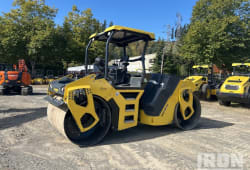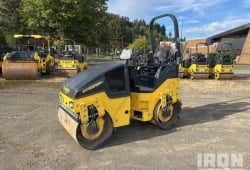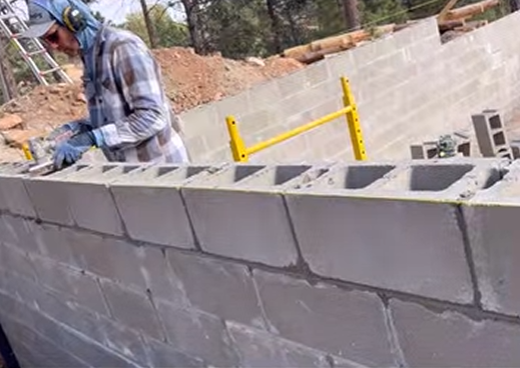Between JCB 531-70 vs. Manitou MLT741: Which is best?
11 Min read
)
July 26, 2023
The JCB 531-70 and Manitou MLT741 are two popular telehandler models that are widely used in various industries. These machines are designed to handle heavy loads and provide excellent maneuverability on job sites. In this article, we will compare the key features, performance, comfort, and maintenance aspects of these two telehandlers to determine which one is the best.
History of JCB and Manitou
JCB, a British multinational corporation, has been a leader in the construction equipment industry for over 75 years. They have a rich history of designing and manufacturing innovative machinery that has revolutionized the construction sector. JCB's commitment to quality and customer satisfaction has earned them a strong reputation in the industry.
Manitou, on the other hand, is a French company that has been manufacturing material handling equipment for more than 60 years. They are known for their expertise in producing robust and reliable machines. Manitou's dedication to technological advancements and continuous improvement has made them a trusted name in the industry.
Both JCB and Manitou have a long-standing history of delivering high-quality telehandlers that meet the demands of various industries. Their commitment to innovation and customer satisfaction has helped them establish a strong presence in the global transmission market.
:format(webp))
Overview of JCB 531-70 and Manitou MLT741 Models
The JCB 531-70 and Manitou MLT741 are both robust telehandler models that offer impressive performance capabilities. The JCB 531-70 boasts a lift capacity of 3.1 tons and a maximum lift height of 7 meters, making it suitable for a wide range of tasks. Whether you need to lift heavy materials to a considerable length and height or transport them across the job site, the JCB 531-70 can handle the job with ease.
On the other hand, the Manitou MLT741 offers a slightly higher lift capacity of 4.1 tons and a maximum lift height of 7 meters. This makes it well-suited for heavy-duty applications that require the manual handling of large and bulky materials. With its powerful engine and advanced hydraulic system, the Manitou MLT741 provides exceptional performance and reliability in demanding work environments.
Both telehandlers are equipped with a number of advanced features and technologies that enhance their performance and efficiency. They come with ergonomic cabins that prioritize operator comfort and safety. The spacious and well-designed cabins provide excellent visibility, reducing the risk of accidents and improving productivity.
Furthermore, both telehandlers offer easy maintenance and serviceability. JCB and Manitou understand the importance of minimizing downtime and keeping the machines running smoothly. They have designed their telehandlers with accessible service points and simplified maintenance procedures, making it easier for operators and technicians to perform routine inspections and repairs.
In conclusion, the JCB 531-70 and Manitou MLT741 are both exceptional telehandler models that excel in performance, comfort, and maintenance aspects. While the JCB 531-70 offers a versatile solution for a wide range of tasks, the Manitou MLT741 is well-suited for heavy-duty applications. The choice between the two ultimately depends on the specific requirements and preferences of the user.
Key Features Comparison
When it comes to choosing the right telehandler for your needs, it's important to consider the key features that set different models apart. In this comparison, we will take a closer look at the JCB 531-70 and Manitou MLT741, two popular telehandlers in the market.
Engine and Power
One of the first aspects to consider is the engine and power of the telehandlers. Both the JCB 531-70 and Manitou MLT741 are equipped with powerful engines that deliver exceptional performance. The JCB model is powered by a 55 kW engine, providing ample power for a wide range of tasks. On the other hand, the Manitou model comes with a slightly more powerful 74 kW engine. This gives the Manitou MLT741 an edge in terms of raw power, allowing it to handle heavier loads with ease.
Lift Capacity and Height
Another important factor to consider is the lift capacity and max. height of the telehandlers. When it comes to lift capacity, the Manitou MLT741 takes the lead with its impressive 4.1-ton capacity compared to the 3.1 tons offered by the JCB 531-70. This higher lift capacity makes the Manitou MLT741 more suitable for applications that require lifting heavier loads. However, both models have a maximum lift height of 7 meters, providing ample reach for most tasks.
Maneuverability and Stability
Maneuverability and stability are crucial when operating a telehandler. Both the JCB 531-70 and Manitou MLT741 excel in these aspects. They are equipped with four-wheel drive systems that ensure optimal traction on various terrains, making them suitable for both indoor and outdoor applications. Additionally, both models offer excellent turning circles, allowing for easy navigation in confined spaces.
One feature that sets the Manitou MLT741 apart is its stabilizer system. This system enhances stability when operating with heavy loads, making it ideal for demanding job sites where precision and safety are paramount. The stabilizer system ensures that the telehandler remains steady and secure, even when operating at maximum capacity.
In conclusion, both the JCB 531-70 and Manitou MLT741 are powerful and versatile telehandlers. The JCB model offers reliable performance with its 55 kW engine, while the Manitou model provides that extra power with its 74 kW engine. The Manitou MLT741 also boasts a higher lift capacity and a stabilizer system for less weight and enhanced stability. Ultimately, the choice between these two models will depend on the specific needs and requirements of your projects.
Performance in Different Conditions
Performance on Rough Terrain
Both the JCB 531-70 and Manitou MLT741 are designed to perform exceptionally well on rough terrain. They are equipped with rugged tires and advanced suspension systems that provide excellent ground clearance and shock absorption. This enables the machines to navigate through uneven terrain with ease, ensuring productivity is maintained even in challenging conditions.
On rough terrain, the JCB 531-70 and Manitou MLT741 truly shine. Their robust construction and heavy-duty components make them well-suited for demanding tasks. The machines' sturdy frames and reinforced structures allow them to withstand the rigors of rough terrain, ensuring long-lasting durability and reliability.
Moreover, the JCB 531-70 and Manitou MLT741 boast impressive traction capabilities, thanks to their specially designed tires and wheels. These tires feature deep treads and strong grip, providing optimal traction on uneven surfaces. This ensures that the machines can traverse through rough terrain without getting stuck or losing traction, maximizing efficiency and productivity.
Performance in Wet Conditions
When it comes to performance in wet conditions, both the JCB 531-70 and Manitou MLT741 demonstrate impressive capabilities. They are equipped with waterproof seals and components that protect the machine from moisture damage. Additionally, their powerful engines and advanced hydraulic systems allow for efficient operation even in wet and muddy environments.
In wet conditions, the JCB 531-70 and Manitou MLT741 prove their versatility. Their waterproof design ensures that no moisture seeps into critical components, preventing potential damage and costly repairs. This feature is particularly beneficial when working in rainy or humid climates, where exposure to water is unavoidable.
Furthermore, the machines' powerful engines provide ample power and torque, allowing them to handle heavy loads even in wet conditions. The advanced hydraulic systems enable precise control and smooth operation, ensuring optimal performance regardless of the weather conditions. Whether it's lifting heavy objects or maneuvering through muddy terrain, the JCB 531-70 and Manitou MLT741 excel in wet conditions.
Additionally, the machines' operators can rely on various safety features specifically designed for wet conditions. These include anti-slip surfaces, enhanced visibility through rain-resistant windows, and advanced lighting systems for improved visibility in low-light situations. These features not only ensure the safety of the operators but also contribute to overall productivity in wet conditions.
Comfort and Ease of Use
When it comes to telehandler models, operator comfort is a crucial factor to consider. Both the JCB 531-70 and Manitou MLT741 excel in this area, offering ergonomically designed cabins that prioritize the well-being of operators. These cabins are thoughtfully equipped with adjustable seats, allowing operators to find the perfect position for their individual needs. No more uncomfortable shifts or strained backs!
Furthermore, both models are equipped with climate control systems, ensuring that operators can work in optimal temperatures regardless of the weather conditions outside. This feature is particularly valuable in extreme climates, where extreme heat or cold can negatively impact productivity and operator well-being. With the JCB 531-70 and Manitou MLT741, operators can focus on their tasks at hand without being distracted by discomfort or noise.
Another advantage of these telehandlers is their excellent visibility. The cabins are designed with large windows and strategically placed mirrors, providing operators with a clear view of their surroundings. This not only enhances safety but also contributes to reducing operator fatigue. With a clear line of sight, operators can efficiently navigate their work environment and avoid potential hazards.
Control and Handling
Aside from operator comfort, control and handling are also crucial aspects to consider when comparing telehandler models. Both the JCB 531-70 and Manitou MLT741 are renowned for their precise control and smooth handling, making them a joy to operate.
These telehandlers are equipped with advanced motor control systems that allow for precise movements. Operators can easily manipulate the machine's functions with accuracy, whether it's lifting heavy loads or maneuvering in tight spaces. This level of control not only increases efficiency but also reduces the risk of accidents or damage to the surrounding environment.
Moreover, both models are designed to provide excellent stability during lifting and maneuvering operations. This stability is achieved through innovative engineering and the incorporation of features such as counterweight systems and robust chassis designs. With enhanced stability, operators can confidently lift and transport heavy loads without compromising safety or machine performance.
In conclusion, the JCB 531-70 and Manitou MLT741 excel in operator comfort and ease of use. With their ergonomic cabins, climate control systems, excellent visibility, precise control, and smooth handling, these telehandlers offer a superior user experience. Whether it's a long day of work or intricate tasks that require finesse, operators can rely on these models to deliver comfort, control, speed and efficiency.
Maintenance and Durability
Service and Maintenance Requirements
Regular service and maintenance are essential for keeping telehandlers in optimal condition and prolonging their lifespan. Both the JCB 531-70 and Manitou MLT741 have straightforward service and maintenance requirements. They feature easy access points for routine inspections and maintenance tasks, minimizing downtime and ensuring that the machines can be quickly back in operation.
Longevity and Durability
When it comes to longevity and durability, both the JCB 531-70 and Manitou MLT741 are built to withstand harsh working conditions. They are manufactured using high-quality materials and components that are designed to last. Additionally, these telehandlers undergo rigorous testing to ensure their reliability, making them a worthwhile investment for businesses that require robust and long-lasting machines.
Conclusion
After a thorough comparison of the JCB 531-70 and Manitou MLT741 telehandler models, it's evident that both machines offer exceptional performance, comfort, and maintenance capabilities. However, in making a choice between the two, it ultimately boils down to the specific needs and preferences of the user.
The JCB 531-70 stands out as a versatile solution, boasting reliable performance and maneuverability for a wide range of tasks. With its ergonomic cabin design and accessible maintenance features, it ensures operators can work efficiently and comfortably while minimizing downtime.
On the other hand, the Manitou MLT741 impresses with its raw power and higher lift capacity, making it ideal for heavy-duty applications that demand robust handling. Its stabilizer system further enhances stability, ensuring precision and safety in demanding job sites.
In my opinion, as someone deeply invested in the efficiency and effectiveness of construction equipment, I find the Manitou MLT741 to be a compelling choice. Its superior power and stability provide a sense of confidence in tackling even the most challenging tasks, contributing to increased productivity and peace of mind on the job site. While both models are commendable, the Manitou MLT741's combination of power, stability, and durability makes it the standout choice for those seeking top-tier performance in their telehandler.

Rex Walz is Boom & Bucket's Manager of Supplier Relations, bringing over a decade of experience in B2B sales and heavy equipment solutions. With a background spanning government, construction, industrial, and commercial sectors, he has a proven track record of driving growth and building trusted customer relationships. At Boom & Bucket, Rex is passionate about helping partners succeed while advancing the company's mission to create the most trusted marketplace for heavy equipment.














